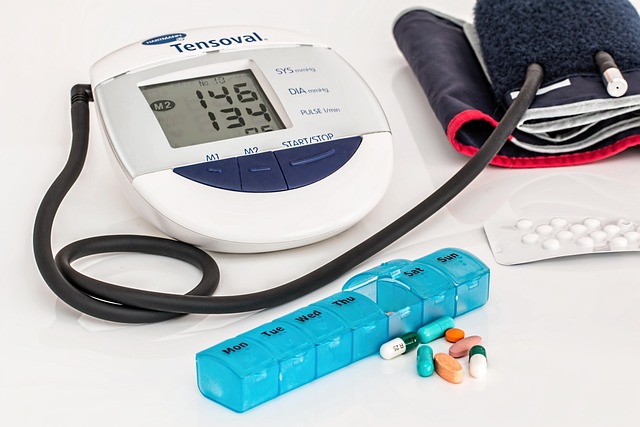Migraine Treatment Options Explained: From Quick Relief to Long-Term Control
Migraines affect millions of people worldwide, causing debilitating pain, sensitivity to light and sound, and disruption to daily life. Understanding the range of treatment options available can help individuals manage symptoms more effectively and reduce the frequency of attacks. This article explores various approaches to migraine management, from immediate relief strategies to preventive measures designed for long-term control.

Migraines are more than just headaches. They represent a complex neurological condition that can significantly impact quality of life. While there is no universal cure, modern medicine offers numerous treatment pathways tailored to individual needs. The key to effective management lies in understanding both acute relief methods and preventive strategies.
What Are the Main Types of Migraine Relief Treatment?
Migraine relief treatment generally falls into two categories: acute (abortive) treatments and preventive (prophylactic) treatments. Acute treatments aim to stop or reduce symptoms once a migraine begins, while preventive treatments work to reduce the frequency, severity, and duration of future attacks. Acute medications include over-the-counter pain relievers like ibuprofen and aspirin, as well as prescription medications such as triptans and ergotamines. These work by targeting specific pathways in the brain that contribute to migraine pain. Preventive treatments may include daily medications, lifestyle modifications, and alternative therapies. The choice between these approaches depends on migraine frequency, severity, and individual response to treatment.
How Does Preventive Migraine Treatment Work?
Preventive migraine treatment is recommended for individuals who experience frequent or severe migraines that interfere with daily functioning. These treatments are taken regularly, regardless of whether a migraine is present, to reduce the likelihood of future episodes. Common preventive medications include beta-blockers, anticonvulsants, antidepressants, and CGRP inhibitors. Beta-blockers like propranolol help regulate blood flow and reduce migraine frequency. Anticonvulsants such as topiramate work by stabilizing electrical activity in the brain. Newer CGRP inhibitors target a protein involved in migraine development and have shown promising results in clinical trials. Preventive treatment typically requires several weeks to months before full benefits are realized, and healthcare professionals often adjust dosages or switch medications to find the most effective regimen.
What Are the Different Types of Migraine Relief Available?
Beyond medication, various types of migraine relief encompass lifestyle changes, complementary therapies, and medical procedures. Lifestyle modifications include maintaining regular sleep patterns, staying hydrated, managing stress, and identifying dietary triggers. Complementary therapies such as acupuncture, biofeedback, and cognitive behavioral therapy have demonstrated effectiveness in some patients. Medical procedures like nerve blocks and Botox injections offer relief for chronic migraine sufferers. Nerve blocks involve injecting anesthetic near specific nerves to interrupt pain signals. Botox injections, administered every three months, can reduce migraine frequency in chronic cases. Additionally, devices such as transcutaneous electrical nerve stimulation (TENS) units and neuromodulation devices provide non-invasive relief options. Combining multiple approaches often yields the best outcomes, as migraine management is highly individualized.
Can Lifestyle Changes Reduce Migraine Frequency?
Lifestyle modifications play a crucial role in migraine management and can significantly reduce attack frequency. Regular sleep schedules help regulate circadian rhythms, which influence migraine susceptibility. Dietary adjustments, including avoiding known triggers like aged cheeses, processed meats, alcohol, and artificial sweeteners, can prevent episodes. Staying hydrated and eating balanced meals at consistent times helps maintain stable blood sugar levels. Stress management techniques such as meditation, yoga, and progressive muscle relaxation reduce tension that can trigger migraines. Regular moderate exercise improves overall health and may decrease migraine frequency, though intense physical activity can sometimes trigger attacks. Keeping a migraine diary to track triggers, symptoms, and treatment responses helps individuals and healthcare providers identify patterns and optimize management strategies.
What Should You Know About Migraine Treatment Costs?
The cost of migraine treatment varies widely depending on the type of intervention, geographic location, and insurance coverage. Over-the-counter pain relievers typically cost between $5 and $20 per bottle, while prescription triptans can range from $20 to $100 per dose without insurance. Preventive medications vary significantly, with generic options costing $10 to $50 monthly and newer CGRP inhibitors ranging from $500 to $700 per month without insurance coverage. Botox treatments for chronic migraines may cost $300 to $600 per session, though many insurance plans cover this when medically necessary. Alternative therapies like acupuncture sessions typically range from $60 to $120 per visit. Medical consultations with specialists can cost $150 to $500 depending on location and provider. Many pharmaceutical companies offer patient assistance programs to reduce costs for expensive medications.
| Treatment Type | Typical Cost Range | Frequency |
|---|---|---|
| Over-the-counter pain relievers | $5 - $20 | As needed |
| Prescription triptans | $20 - $100 per dose | As needed |
| Preventive medications (generic) | $10 - $50 | Monthly |
| CGRP inhibitors | $500 - $700 | Monthly |
| Botox injections | $300 - $600 | Every 3 months |
| Acupuncture sessions | $60 - $120 | Weekly or bi-weekly |
Prices, rates, or cost estimates mentioned in this article are based on the latest available information but may change over time. Independent research is advised before making financial decisions.
How Do You Choose the Right Treatment Approach?
Selecting the appropriate migraine treatment requires collaboration with healthcare professionals who can assess individual circumstances. Factors influencing treatment choice include migraine frequency, severity, duration, associated symptoms, medical history, and potential medication interactions. For individuals experiencing fewer than four migraines monthly, acute treatment alone may suffice. Those with more frequent or debilitating migraines often benefit from preventive therapy. Healthcare providers typically start with first-line treatments and adjust based on response and tolerability. Some patients require combination therapy, using both acute and preventive approaches. Monitoring treatment effectiveness through migraine diaries helps track progress and inform adjustments. Patient education about proper medication use, including timing and dosage, maximizes treatment benefits and minimizes risks.
Managing migraines effectively requires a comprehensive approach that addresses both immediate symptom relief and long-term prevention. With numerous treatment options available, individuals can work with healthcare providers to develop personalized management plans that improve quality of life and reduce the burden of this challenging condition.
This article is for informational purposes only and should not be considered medical advice. Please consult a qualified healthcare professional for personalized guidance and treatment.




